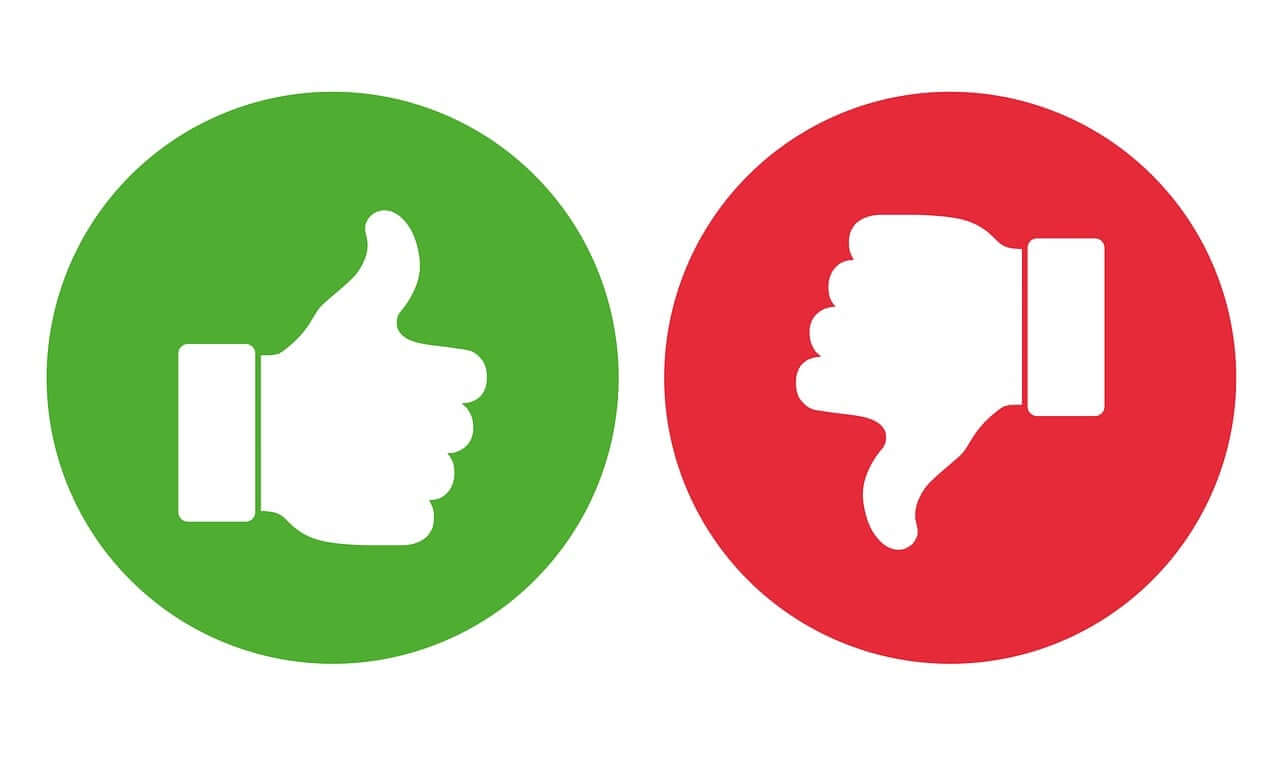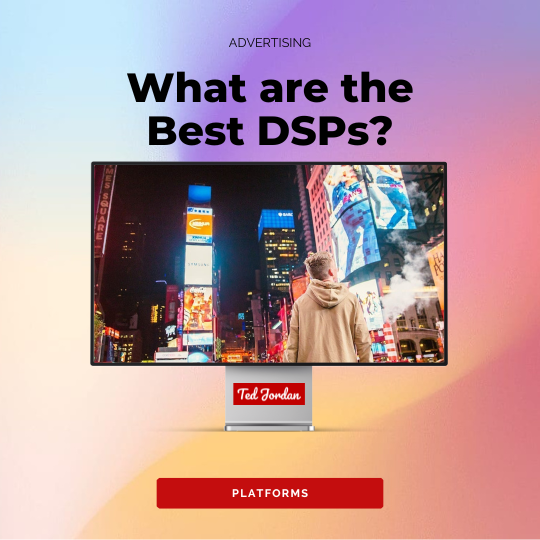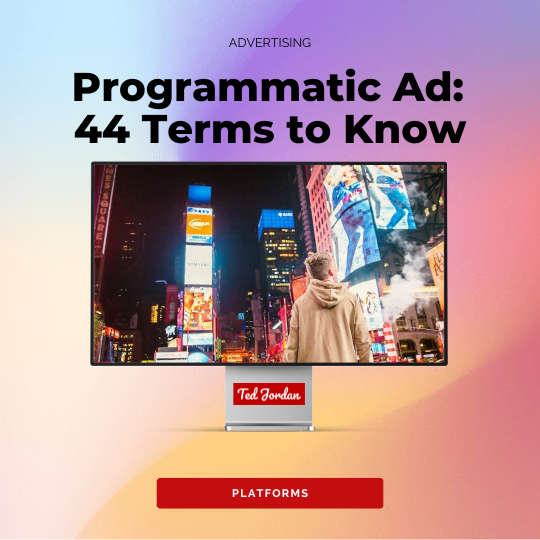This is not a secret: targeting plays a crucial role in marketing and advertising these days. Campaign success and high ROI are often impossible without relevant targeting segments. But all the information used to target users and potential buyers has to be collected, segmented, analysed and converted into usable data, all while being compliant with regulations such as GDPR (Europe) or CCPA (California).
This is where a DMP comes in handy. This AdTech software helps agencies, publishers, brands and advertisers collect and manage data.
A DMP is one of the main components of data-driven marketing campaigns.

What does DMP stand for in marketing? What does the DMP acronym mean? What’s the difference between DMP and CDP?
Continue to read to understand what’s behind the DMP acronym…
What does DMP stand for?
The DMP acronym stands for Data Management Platform. A DMP is an AdTech platform used by publishers, advertisers and advertising agencies to manage collected data and create DMP segments, or customer profiles.
How DMPs work
DMPs, or Data Management Platforms, are mainly used for data collection, segmentation, targeting and ad personalisation. They present various advantages regarding data analytics, data storage and audience segmentation.
DMPs collect online or offline data: website visits, device types, pages viewed, locations, IDFA, IP addresses*, device IDs from Connect TVs or mobiles, etc.
Online data is often collected from mobile apps, websites or analytics.
Offline data may come from e-mails, purchase history or a CRM (Customer Relationship Management software).
DMPs are important because they help publishers and agencies combine first-party data, second-party data and third-party data in a secure and compliant way (think about GDPR).
After data is collected, a DMP anonymises it and categorises it (female/male, age (18-24, 25+…), device type, etc.). Then, the Data Management Platform groups and merges profiles. For example, if an e-mail address or a device ID are shared across users, the DMP will combine all the data to create a single user and avoid duplicates.

Note that collected data would be anonymised at this stage.
The data is stored on the DMP and DMP segments are now created: interests, behaviours and demographics. Attribution and audience insights are then available.
Once the data is activated on a DMP (Data Management Platform), it can be sold to brands, agencies, advertisers… through Programmatic platforms such as Demand-Side Platforms (DSPs), Supply-Side Platforms (SSPs) or ad exchanges. This transfer of data is often possible using an API connection. It’s then possible to use data from DMPs for data-driven campaigns.

*Note that it’s not always allowed to track and collect IP addresses, depending on the data privacy regulations in force (GDPR, for example).
DMP examples
DMPs have been used for decades in marketing, by businesses, agencies and publishers. Here are some DMP examples:
- Nielsen Marketing Cloud (Nielsen DMP)
- Adobe Audience Manager (Adobe DMP)
- Google Marketing Platform (Google DMP)
Find an example of DMP use below, for a luxury item such as a LVMH bag. Which DMP segments could be used to target LVMH bag potential buyers?
DMP segments used to target highly potential new customers or buyers for this specific LVMH bad could be, for example:
- DMP demographic segment: 30-59 years old, female, CSP+, entrepreneur or business professional, lives in major cities like NYC, Paris or Hong Kong.
- DMP behavioural segment: previous visits on the LVMH’s website, following LVMH on Instagram and engaging with content on social media (likes, comments, shares).
- DMP interest segment: luxury brands (Dior, Chanel, LVMH, Balenciaga), mode, handbags.
DMP pros and cons
Advantages of DMPs
The main advantages of DMPs (Data Management Platforms) are:
- DMP segments
- Ad personalisation
- Multichannel and omnichannel targeting
- Campaign performance improvement and increase of ROI
- Data privacy compliance
- Monetisation
DMP segments
DMP segments represent the core of Data Management Platforms. Audience segmentation allows publishers and advertisers to categorise user profiles automatically and in a centralised manner.
DMP segments are great for audience building, of course, but not only. DMPs can create lookalike audiences (LAL audiences) based on the initial ones.
DMP segments are often described with a segment ID, a segment name and a CPM price. You can find this information on Programmatic platforms such as DSPs.
| Segment ID | Segment name | Price |
| 12345 | Income > $250k | $2.50 |
| 6789 | Interest > Travel | $1.25 |
| 13579 | Demo > Students | $1.00 |
Ad personalisation
The DMP segments we just mentioned allow advertisers to personalise their ads thanks to the data they collected.
For example, if they want to only target students, they could use a demographic DMP segment “students”, where only users and devices associated with a student would be targeted.
Then, they could mention something about studies, university campuses, degrees or student loans in their ads to add personalisation. Ad personalisation increases engagement and conversion rates, so why wouldn’t you use this DMP-related feature?
Multichannel and omnichannel targeting

DMPs collect data from all devices, online and offline: mobile phones, laptops, Connected TVs, etc. Therefore, you can use a DMP to target users during their buying journey, across all devices, online or offline.
It’s possible to target customers on a mobile app, in-store, on their CTV…
This is a great advantage for advertisers and brands creating multichannel or omnichannel strategies.
Improve ROI
Because audience targeting is more specific and more efficient, thanks to all the data collected, advertisers and agencies can deliver ads to relevant audiences. Hence, they spend much less on irrelevant medium: websites, inventories, low-quality apps, etc. and they increase their ROI.
Data privacy compliance
One of the major selling points of DMPs is data privacy compliance. DMPs only collect GDPR or CCPA (or other regulations) compliant data and anonymise it: DMP owners are then certain to stay compliant with data privacy regulations.
A DMP is also a great AdTech tool to prevent data leakage.
Monetisation
Another DMP advantage worth mentioning is monetisation.
The owner of a Data Management Platform owns the data collected for its DMP. Therefore, DMP owners have the possibility of selling DMP data to generate additional revenue. And because the data does not contain any personal information, it’s still compliant with European laws.

Disadvantages of DMPs
There are some disadvantages of using a DMP though.
For example, DMPs rely heavily on cookies to identify online and offline behaviours, and users. With a cookieless world ahead, collecting relevant data through a DMP may be more difficult (but not impossible); it’s not the end of DMPs. It will still be possible to collect data and identify users, using cookieless targeting solutions (such as device ID or IP address) and contextual targeting. Also, DMPs use a lot of first-party data, which is still valuable for publishers, advertisers and brands.
In Europe, with GDPR, data collection is restricted. You can only collect personal data and use cookies if users give their consent. DMPs have to rely more and more on first- and second-party data.
Another disadvantage of DMPs is the quality of data. This can happen when you use DMP segments through DSPs or SSPs.
The data quality of some DMPs is not always good. If you use a low quality DMP to target an audience, your campaigns’ results will not be as good as expected. That’s why it’s important to know how DMPs collect data and to ask for DMP segment examples when possible.
Other data platforms – CDP, DSP, CRM, DCR
There are other data platforms on the market: CDP, DSP, CRM, DCR, and much more…
These platforms can be connected to a DMP; they complement each other. For example, CRMs house customer information and leads, CDPs compile data in a centralised and secure database, DSPs are used to purchase inventory and allow the use of DMP segments.
What is the difference between DMP and CDP? Can you connect a DSP to a DMP?
Continue to read to understand the difference between DMP, CDP, DSP, CRM and DCR.
CDP vs DMP
The CDP acronym means Customer Data Platform. A CDP is a data aggregator that collects data from multiple sources: anonymous data and a mix of PII. The PII acronym stands for Personally Identifiable Information.
CDPs are sometimes used to share data with other data platforms like DMPs and CRMs. In simple words, what’s the difference between DMP and CDP?
A CDP is just a database, while a DMP collects, analyses data and gives important insights about the data. A DMP builds a unified profile around each user thanks to data mergence.
One of the weaknesses of CDPs, similar to DMPs’, is the use of cookies to collect data.
DMP vs DSP
A DSP is a Demand-Side Platform, mostly used in Programmatic advertising. Both platforms, DMP and DSP, collect data but DSPs only collect data that is required for bidding purposes. Also, DSPs mainly use third-party data or the data collected from their company or partners. For example, the Yahoo DSP includes Yahoo data, its first-party data.
Note that it’s possible for advertisers and brands to upload first-party data, such as device IDs, directly to a DSP, if needed. It’s also possible to connect a DMP to a DSP to share or sell the data from the DMP.
It’s important to note that DMP owners own the DMP data but it’s often not the case with DSPs because these platforms mainly work with third-party data providers.
DMP vs CRM
A CRM, which stands for Customer Relationship Management, is a software used by businesses to track and organise interactions with customers. A CRM is used to gather customers’ data, first-party data.
Publishers, agencies and advertisers use CRMs to collect information about their prospects, identify sales opportunities, record sales history, etc. CRMs help companies manage information about their customers and their prospects.
A CRM is great for maintaining customer engagement, converting prospects into customers, collecting first-party data, etc. This data can be shared with DMPs.
Some of the best CRMs are provided by Salesforce, HubSpot, Sage, Zendesk or Oracle.

DMP vs DCR
DCR stands for Data Clean Rooms. But what are data clean rooms?
A Data Clean Room (DCR) is a data-sharing solution where multiple parties collaborate and merge their first-party data without revealing any PII, in a secure way. A DCR protects sensitive and personal information, which makes it compliant with GDPR, for example.
Some of the most used DCRs are AWS Data Clean Rooms, Snowflake Data Clean Rooms, BigQuery DCRs from Google, or the ones from AppsFlyer.
A similar system has been created by Alliance Gravity, a data company, where unique IDs are shared between publishers and agencies, without revealing any PII or raw data.
To go further
If you’re interested in knowing more about targeting, audience creation or Programmatic advertising in general, we recommend that you join the Programmatic Online Training created by Ted Jordan, our Programmatic and media trading expert.
This online course has been designed for beginners to intermediate levels and offers many advantages, such as a Programmatic Certificate upon completion of the training.
What are you waiting for?
New to Programmatic? Access our free Programmatic Intro course instead!




